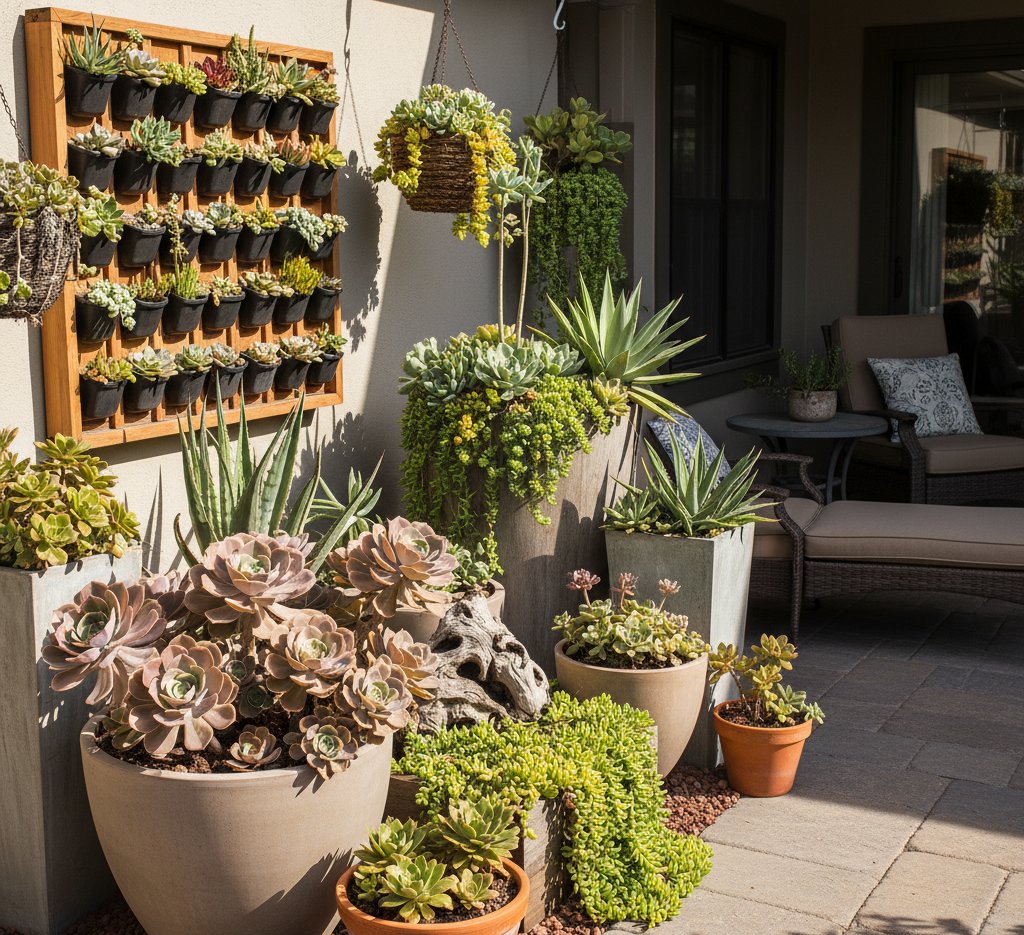Succulent Patio Garden Ideas
Transform your patio into a low-maintenance oasis with a succulent garden that thrives in sun and style. You can create a relaxing space filled with texture, color, and structure using plants that need little water and care. A succulent patio garden gives you a simple, lasting way to enjoy greenery without constant upkeep.
You can arrange succulents in pots, raised beds, or vertical displays to fit any patio size. Mix shapes and tones, like rosette Echeveria, spiky Agave, or trailing Sedum, to add depth and balance. Natural elements such as rocks, gravel, and driftwood help tie the design together while keeping it practical.
Key Takeaways
- Learn how to design a simple, low-maintenance succulent patio garden.
- Discover practical layout and container ideas for any outdoor space.
- Find creative ways to display succulents for lasting visual appeal.
Essential Elements for a Thriving Succulent Patio Garden
Healthy patio succulents depend on choosing hardy varieties, providing excellent drainage, and managing sunlight exposure. Each factor supports strong roots, balanced growth, and lasting color throughout the year.
Choosing the Best Succulent Varieties for Patios
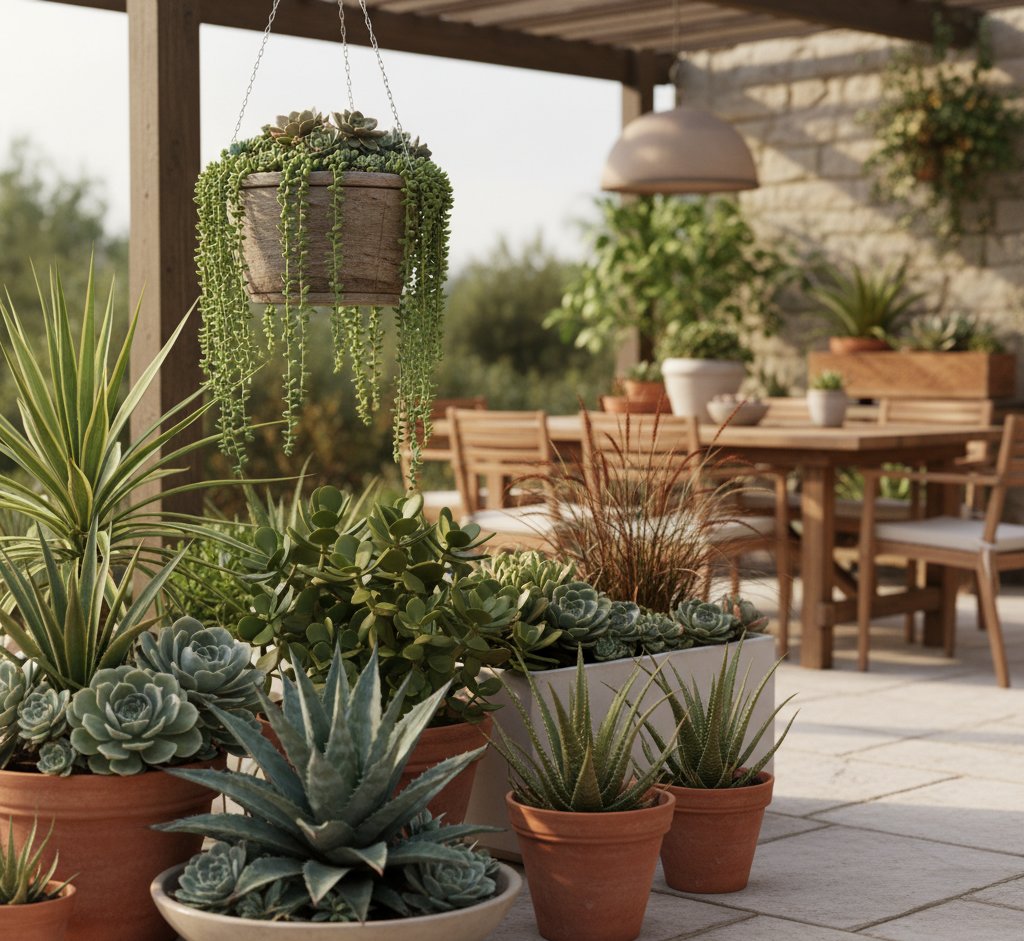
Select drought-tolerant plants that handle outdoor conditions well. Echeveria, Sedum, Crassula, and Aloe adapt easily to container gardens and warm patios. Hens and chicks and donkey’s tail work well in hanging pots or small planters where they can spill over the edges.
For a sculptural look, mix Agave and Yucca with smaller rosettes. This combination adds texture and visual depth. You can also pair succulents with ornamental grasses for contrast and movement in the breeze.
| Type | Ideal Use | Sun Preference |
|---|---|---|
| Echeveria | Pots, borders | Full sun |
| Sedum | Ground cover | Partial to full sun |
| Aloe | Accent plant | Bright light |
| Agave | Focal point | Full sun |
| Crassula | Containers | Bright, indirect light |
Choose plants with similar water and light needs to keep maintenance simple and consistent.
Soil and Drainage Requirements
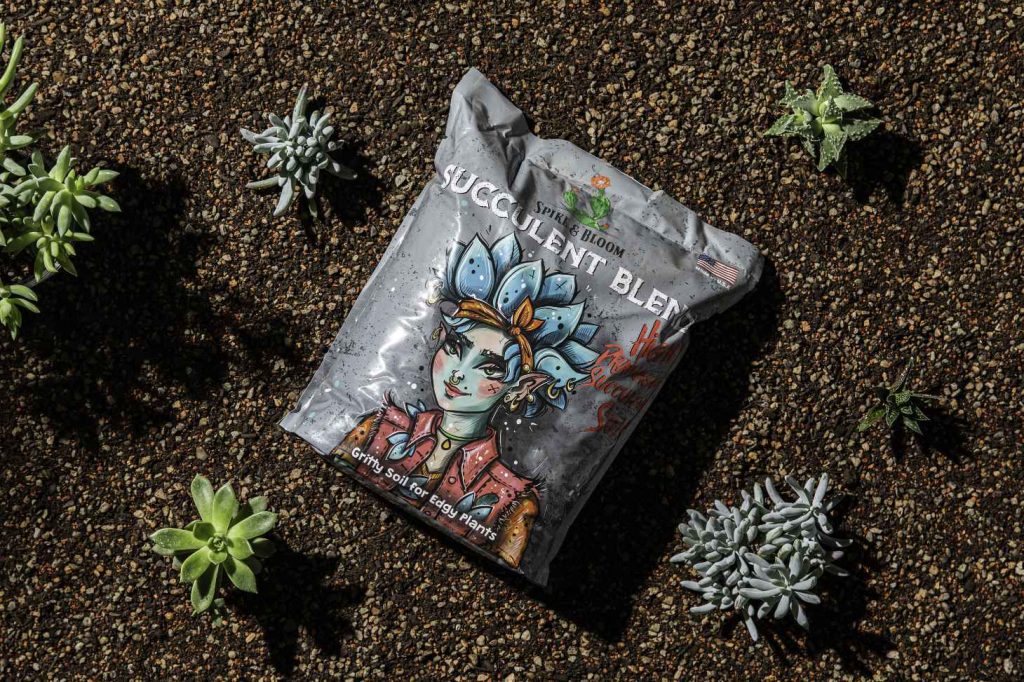
Succulent roots need well-draining soil to prevent rot. Use a soil mix made for succulents, which usually includes coarse sand, pumice, or perlite. Avoid heavy garden soil that holds water.
Ensure each container has drainage holes. If you use decorative pots without them, place a plastic nursery pot inside to allow water to escape.
Water deeply but infrequently. Let the soil dry completely before watering again. This cycle encourages deep root growth and reduces the risk of fungal problems.
Sunlight and Microclimate Considerations
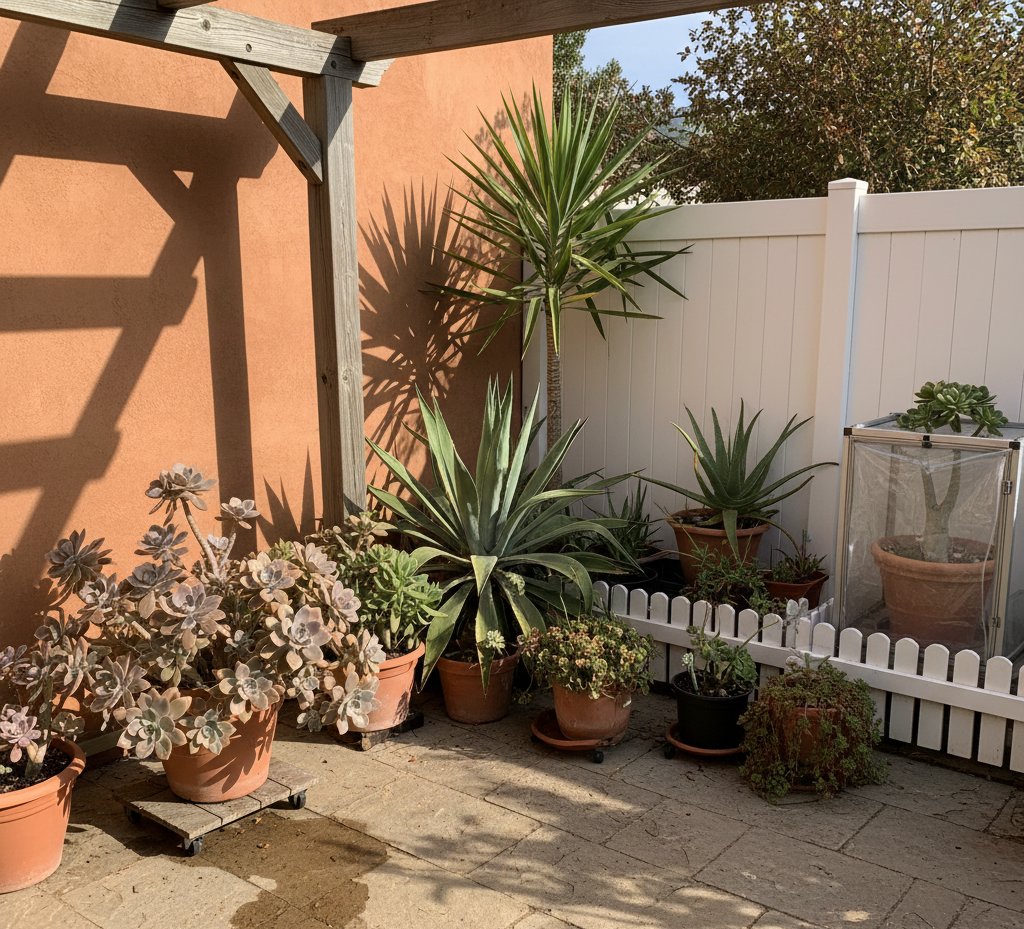
Most succulents thrive in bright light for at least six hours a day. On patios with intense afternoon sun, provide light shade to prevent leaf burn, especially for Echeveria and Crassula. Agave and Yucca tolerate stronger sunlight.
Observe how sunlight moves across your patio. Walls, fences, and nearby plants can create microclimates that affect temperature and moisture. Place heat-tolerant species in sunnier spots and shade-loving ones in cooler corners.
If your area experiences cold winters, move containers to sheltered areas or indoors. Succulents like Aloe and Sedum handle mild frost, but tropical varieties need protection from freezing temperatures.
Creative Succulent Patio Garden Ideas and Layouts
You can design a succulent patio garden that looks organized, saves water, and stays easy to maintain. Use natural materials, height variation, and defined spaces to create a balanced layout that highlights each plant’s shape and color.
Rock Gardens for Natural Texture
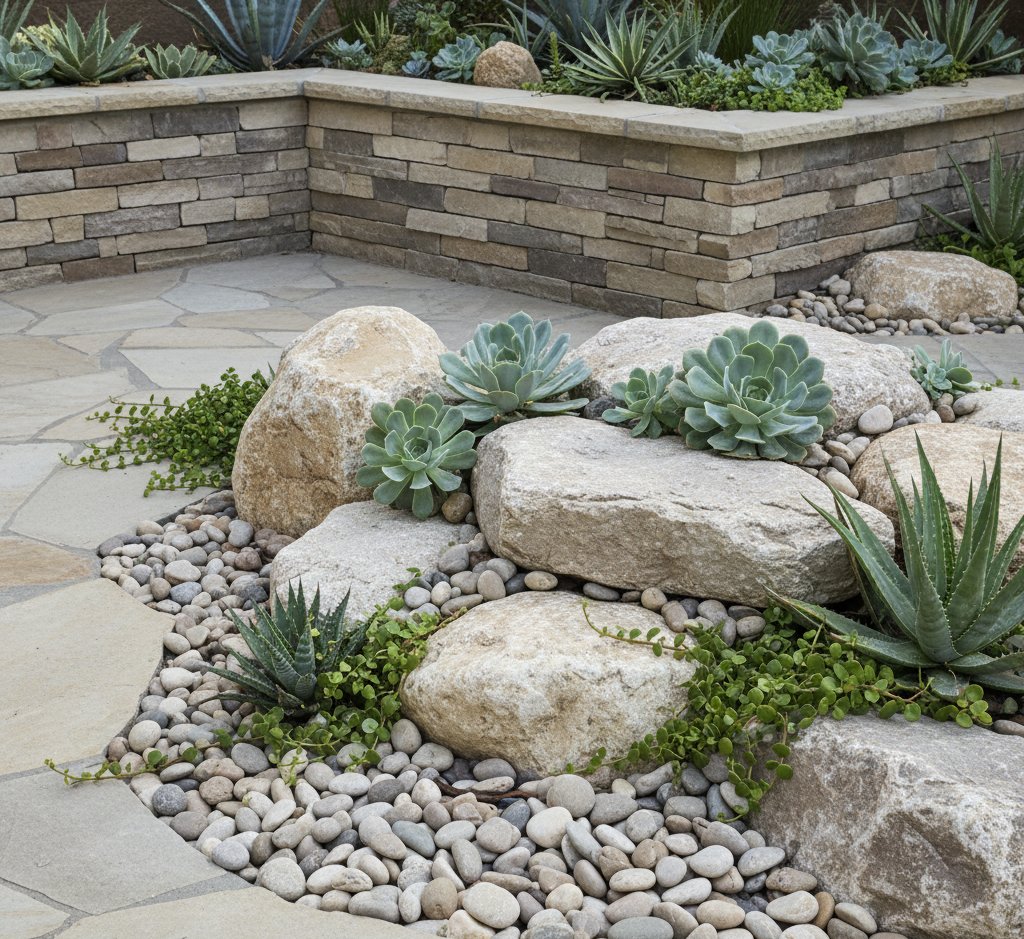
Rock gardens add structure and contrast to your patio while keeping maintenance low. Use river stones, gravel, or lava rocks to frame clusters of succulents like echeverias, agaves, and aloes. The rocks help with drainage and create a natural desert-inspired look.
Arrange stones in irregular patterns to mimic how they appear in nature. Mix small pebbles with larger boulders to avoid a flat design. You can plant sedums or portulacaria afra (elephant bush) between rocks for soft green coverage that fills gaps over time.
If your patio has limited space, build a raised rock bed or use stacked stone planters. This improves drainage and lets you display different textures at eye level. Keep colors consistent, neutral tones like gray or tan blend well with green and blue-gray succulents.
Layered Arrangements and Focal Points
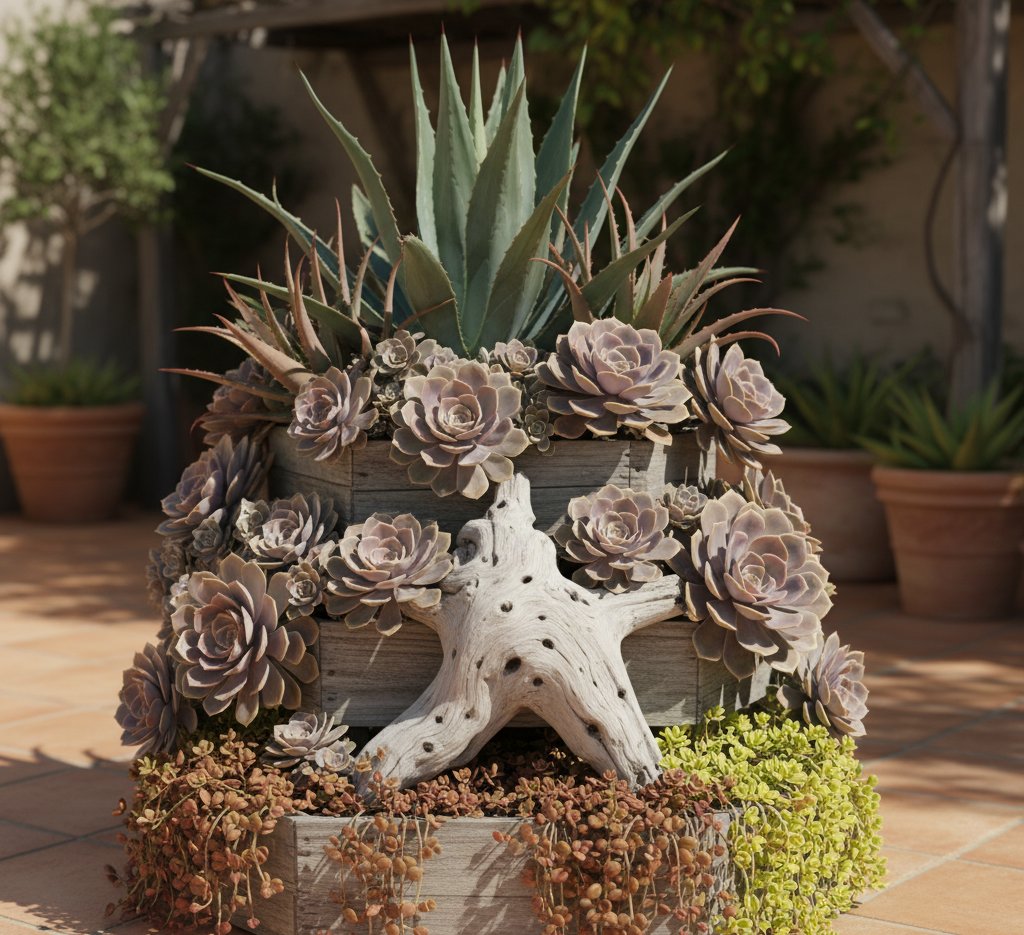
Layering helps your garden look full and balanced. Place taller plants, such as agaves or aloes, toward the back or center. Surround them with medium-height succulents like echeverias and fill in edges with low-growing sedums.
Use containers of different heights or tiered stands to create vertical interest. This approach works well on small patios where space is limited. Each layer should have enough space for airflow and sunlight.
Add a focal point to anchor the layout. A large ceramic pot, driftwood piece, or sculptural cactus can draw attention without cluttering the space. Keep the color palette simple, two or three main hues help the garden feel cohesive.
Incorporating Pathways and Borders
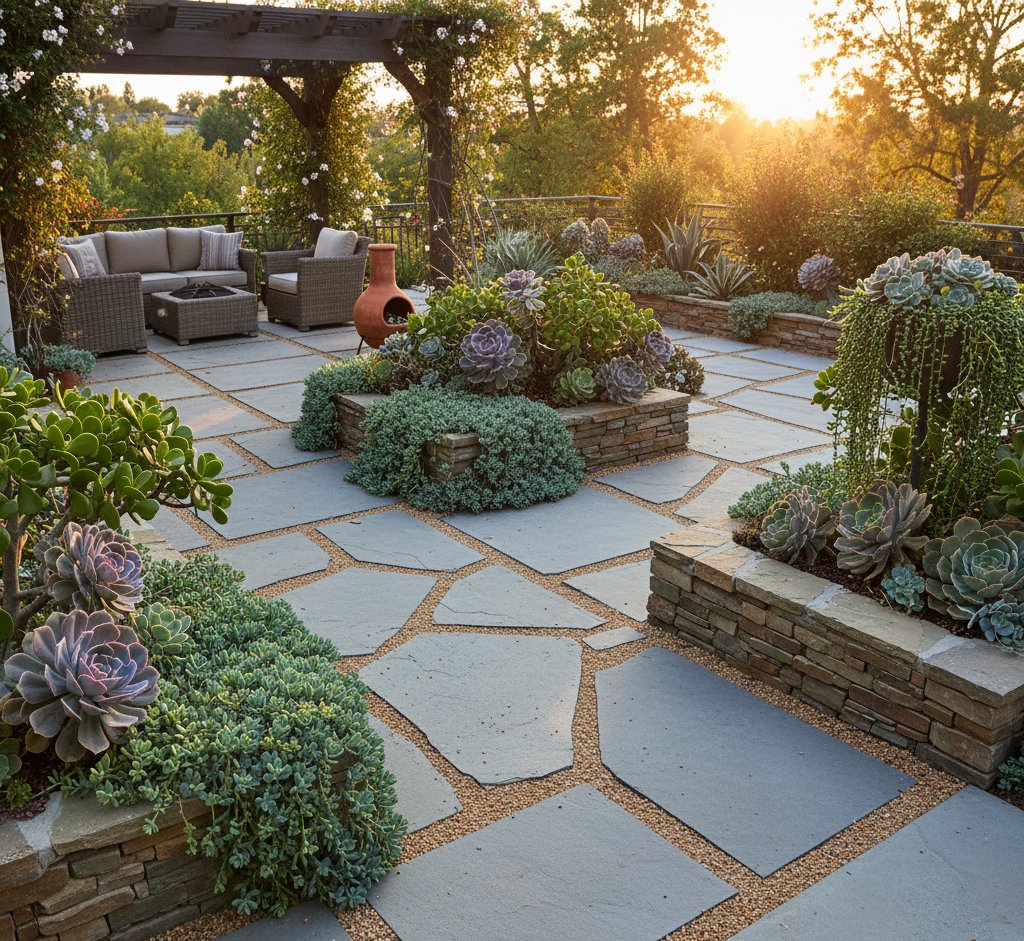
Defined pathways make your patio garden easier to navigate and maintain. Use stepping stones, gravel paths, or pavers to separate planting zones. This prevents soil compaction and gives your layout a clear structure.
Borders help contain your succulent beds and add a finished look. You can edge them with small rocks, terracotta bricks, or metal strips. Choose materials that match your patio’s style for visual consistency.
For a cohesive design, line borders with compact plants like elephant bush (portulacaria afra) or trailing sedums. These soften hard edges and connect different sections of your succulent landscape. Keep paths wide enough for easy access to watering and trimming areas.
Container and Vertical Succulent Displays
You can create a striking patio garden by combining container groupings, upright wall displays, and compact terrariums. Each style uses different materials and arrangements to highlight the texture and color of succulents while keeping care simple and water use low.
Succulent Planters and Pots
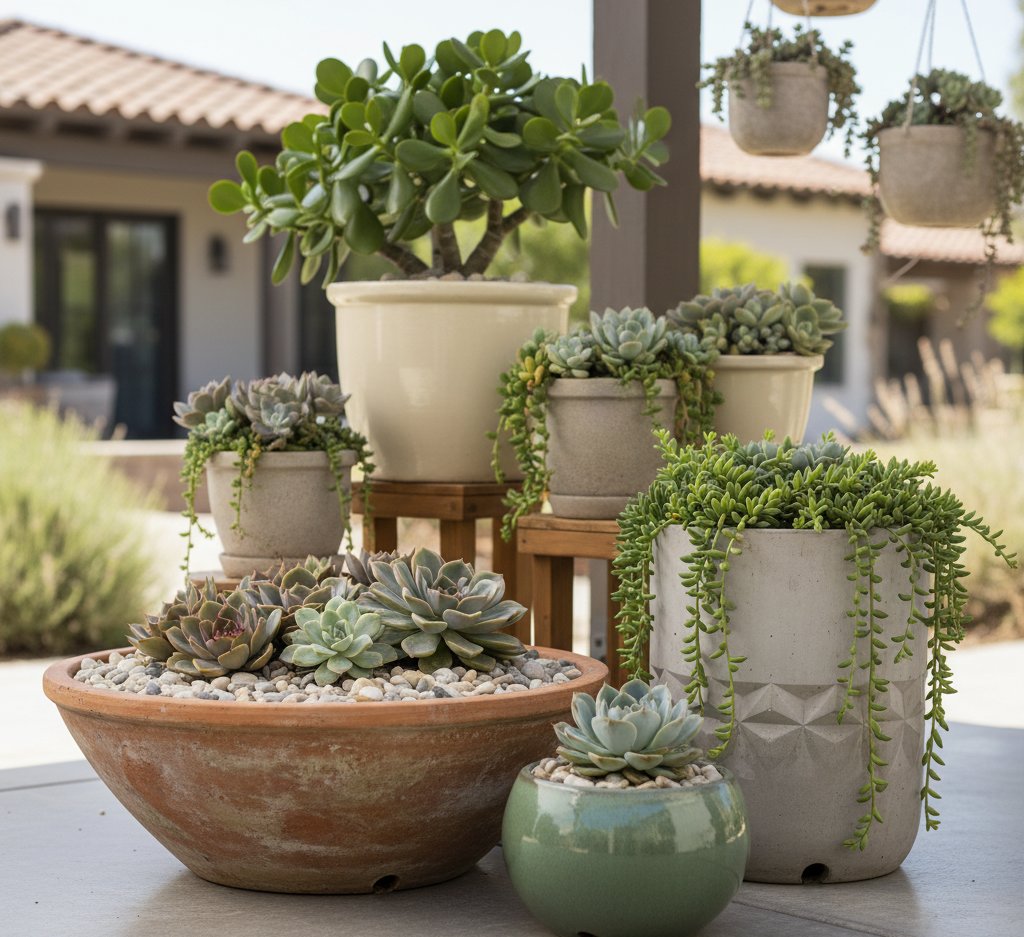
Choose containers with drainage holes to prevent root rot. Clay, concrete, or ceramic pots work best because they allow moisture to escape. For a cohesive look, group planters of different heights and shapes. Mix varieties like Crassula ovata (jade plant), Echeveria, and Donkey’s Tail for contrast in color and form.
Use fast-draining soil designed for succulents. Water sparingly, letting the soil dry completely between waterings. You can top the soil with small pebbles or gravel to reduce evaporation and add a finished look.
| Material | Benefits | Notes |
|---|---|---|
| Terracotta | Breathable, natural look | Dries quickly; needs regular watering checks |
| Concrete | Durable, modern style | Heavy; stable in windy areas |
| Resin | Lightweight, weather-resistant | Good for hanging or large groupings |
Vertical Gardens and Living Walls
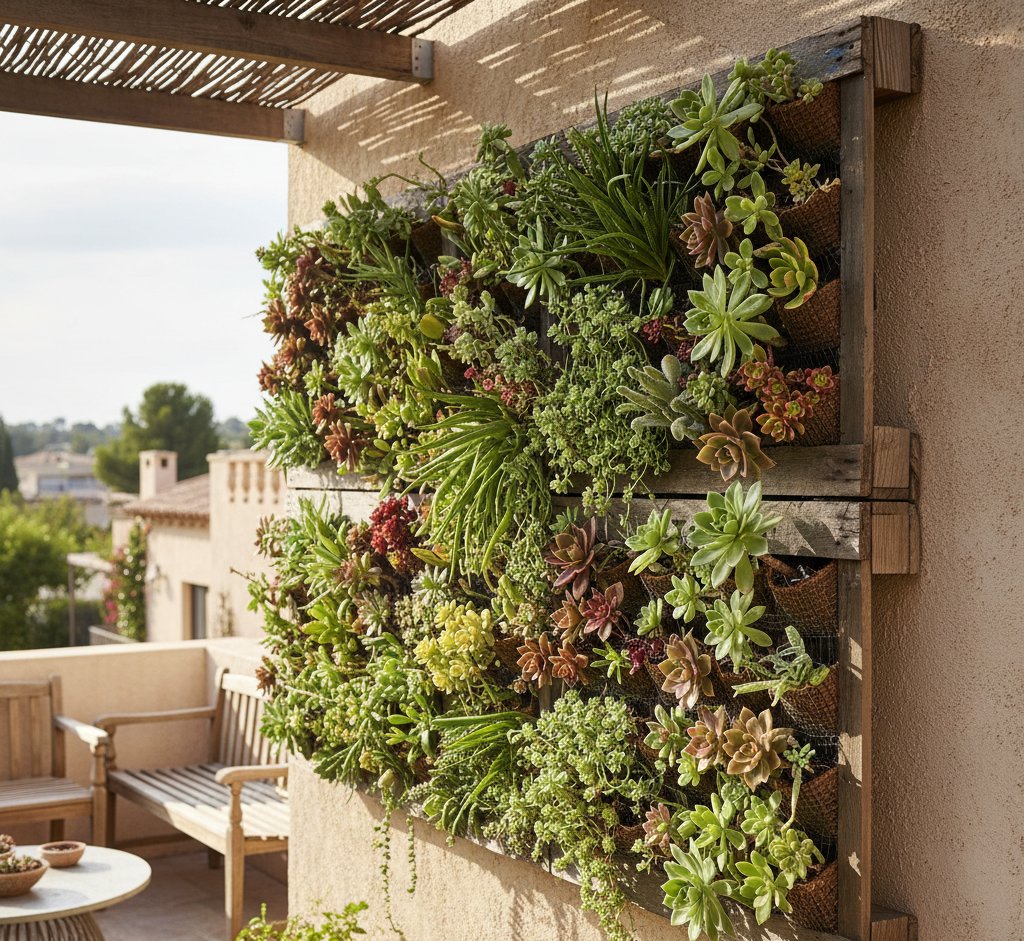
Vertical succulent gardens save space and add visual interest to patio walls or fences. Use frames, pallets, or modular panels with shallow planting pockets. Secure plants with mesh or coir liners to hold the soil.
Select small, shallow-rooted species like Sedum, Haworthia, and Crassula. These varieties adapt well to limited soil and vertical growth. Combine colors and textures for a layered effect.
Hang your display in a spot with bright, indirect sunlight. Water thoroughly, then let the soil dry out completely before watering again. A living wall can also serve as a privacy screen or backdrop for outdoor seating areas.
Terrariums for Small Patio Spaces
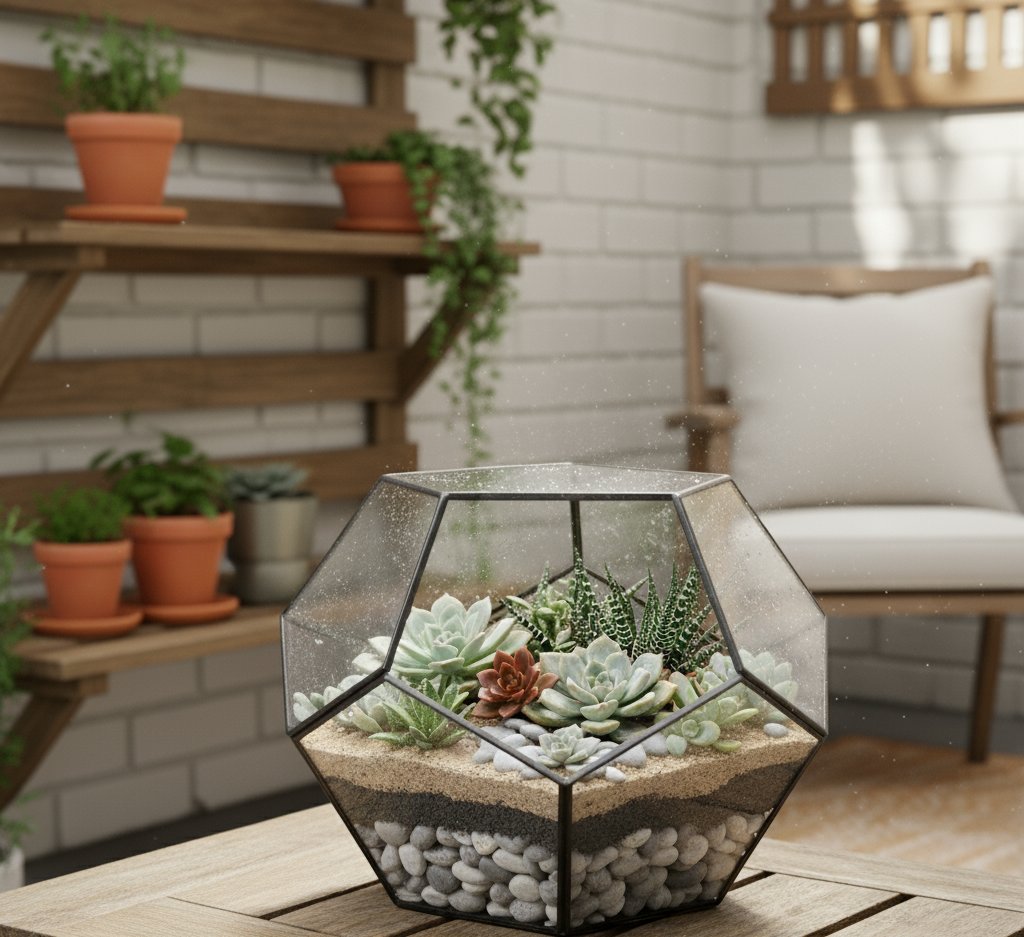
If your patio has limited room, a succulent terrarium offers a compact way to grow multiple plants. Choose a glass bowl, jar, or geometric container with an open top for airflow.
Layer the base with pebbles for drainage, followed by a thin layer of activated charcoal to control moisture and odor. Add well-draining succulent soil, then arrange small succulents like Donkey’s Tail or Graptopetalum in clusters.
Keep terrariums in bright but indirect light to prevent overheating. Mist occasionally rather than watering heavily. This setup works well on tables or shelves where you want greenery without taking up floor space.

